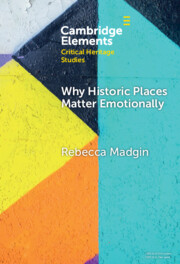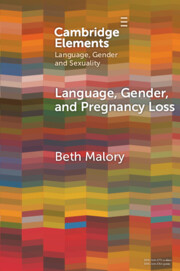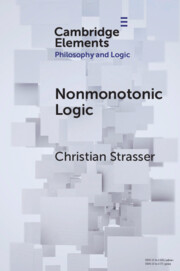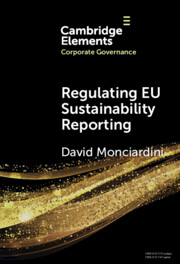Refine listing
Actions for selected content:
2228 results in Cambridge Elements

The Demise of the Global ICE Industry
- China's Stunning Role in Leading the BEV Revolution
-
- Published online:
- 22 October 2025
- Print publication:
- 30 October 2025
-
- Element
-
- You have access
- Open access
- HTML
- Export citation

Why Historic Places Matter Emotionally
- Responses - Attachments - Communities
-
- Published online:
- 22 October 2025
- Print publication:
- 13 November 2025
-
- Element
-
- You have access
- Open access
- HTML
- Export citation

Contested Public Monuments
- Global perspectives on landscapes of memory
-
- Published online:
- 22 October 2025
- Print publication:
- 13 November 2025
-
- Element
- Export citation

Language, Gender and Pregnancy Loss
-
- Published online:
- 21 October 2025
- Print publication:
- 13 November 2025
-
- Element
-
- You have access
- Open access
- HTML
- Export citation

The Indispensability of Intuitions
-
- Published online:
- 21 October 2025
- Print publication:
- 13 November 2025
-
- Element
- Export citation

From Club to Commons
- Enlargement, Reform and Sustainability in European Integration
-
- Published online:
- 21 October 2025
- Print publication:
- 20 November 2025
-
- Element
-
- You have access
- Open access
- HTML
- Export citation

Theory of Mind in Childhood
-
- Published online:
- 20 October 2025
- Print publication:
- 13 November 2025
-
- Element
- Export citation

Organizational Stigma
-
- Published online:
- 20 October 2025
- Print publication:
- 13 November 2025
-
- Element
- Export citation

Nonmonotonic Logic
-
- Published online:
- 18 October 2025
- Print publication:
- 13 November 2025
-
- Element
- Export citation

Between Yahwism and Judaism
- Judean Cult and Culture during the Early Hellenistic Period (332–175 BCE)
-
- Published online:
- 18 October 2025
- Print publication:
- 04 December 2025
-
- Element
- Export citation

How to Use Generative AI in Educational Research
-
- Published online:
- 17 October 2025
- Print publication:
- 04 December 2025
-
- Element
- Export citation

Networks of Reception in the Eighteenth-Century British Press and Laurence Sterne
-
- Published online:
- 17 October 2025
- Print publication:
- 13 November 2025
-
- Element
- Export citation

Biography and the Trade-Gothic Author
- The Case of Isabella Kelly
-
- Published online:
- 15 October 2025
- Print publication:
- 13 November 2025
-
- Element
- Export citation

The Notion of Vitality in African Philosophy of Religion
-
- Published online:
- 14 October 2025
- Print publication:
- 13 November 2025
-
- Element
- Export citation

Ruin Ecology
- An Exercise in Environmental Imagination
-
- Published online:
- 13 October 2025
- Print publication:
- 06 November 2025
-
- Element
- Export citation

Regulating EU Sustainability Reporting
- Learning from Failure and Success
-
- Published online:
- 11 October 2025
- Print publication:
- 13 November 2025
-
- Element
- Export citation

Greening the International Monetary Fund
-
- Published online:
- 10 October 2025
- Print publication:
- 06 November 2025
-
- Element
-
- You have access
- Open access
- HTML
- Export citation

What Is Life? Revisited
-
- Published online:
- 10 October 2025
- Print publication:
- 13 November 2025
-
- Element
- Export citation

China and the Global Economic Order
-
- Published online:
- 10 October 2025
- Print publication:
- 31 December 2025
-
- Element
-
- You have access
- Open access
- HTML
- Export citation

Gerald Gardner and the Creation of Wicca
-
- Published online:
- 10 October 2025
- Print publication:
- 30 October 2025
-
- Element
- Export citation
